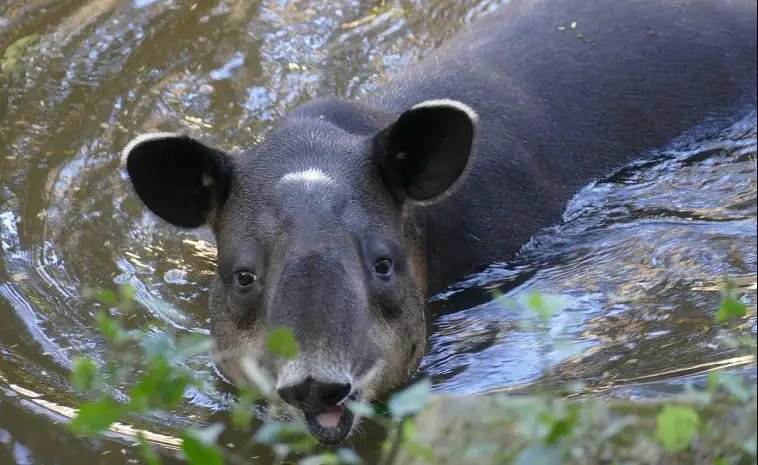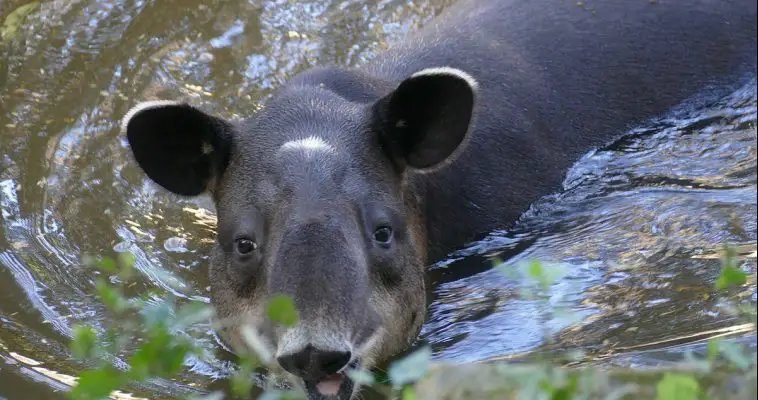
Now, you might wonder, how does this creature find enough food? And what does it actually eat? Here’s the delightful kicker: Baird’s tapirs are herbivores, which means they don’t hunt like lions or wolves. Instead, they graze and browse around, using their exceptional sense of smell to locate tasty treats in their environment. Let’s dive deeper into what makes the Baird’s tapir such a specialized eater and how its natural instincts guide its foraging strategies.
Understanding the Baird’s Tapir
To appreciate the diet and hunting (or, more accurately, foraging) strategies of the Baird’s tapir, it’s vital to understand what this animal is all about. Baird’s tapirs are the largest terrestrial mammals in Central America and can weigh between 500 to 800 pounds. They possess a distinctively hooved appearance, a long snout that resembles a miniature trunk, and a stocky body covered in thick, bristly hair.
These creatures thrive in dense forests and grasslands, usually near water sources like rivers and swamps. Their habitats provide not just shelter but also a spectacular buffet of food options. Baird’s tapirs are often seen near rivers, where they can forage for aquatic plants and fruits. This close relationship with water isn’t just for hydration; it’s also about finding nutritious snacks that help them grow. Understanding their habitat is key to appreciating their diet.
The Diet of the Baird’s Tapir
So, what exactly do Baird’s tapirs eat? You might be surprised to learn that these herbivores have quite a diverse menu. Primarily, they feast on:
- Leaves and twigs from trees
- Fruits such as berries and palms
- Grasses and aquatic plants when near water
Baird’s tapirs are like nature’s lawnmowers, munching through a variety of plants as they roam. They have specially adapted teeth that help them tear and grind tough plant matter. Their strong jaws can easily navigate the fibrous foods they consume. The way they feed is also quite interesting—by using their elongated snout, they can reach up high into trees or forage low on the ground, allowing them to exploit different food sources in their environment.
But it’s not just about variety; the timing matters too. Tapirs tend to be crepuscular, meaning they are most active during dawn and dusk. This behavior helps them avoid the heat of the day while also capitalizing on the cooler hours when their favorite foods are more abundant and easier to access.
Foraging Techniques of Baird’s Tapirs
Now that we know what they eat, let’s look into how Baird’s tapirs find their food. You might think of foraging like a treasure hunt, with tapirs using their noses as the ultimate compass to locate tasty treats.
Baird’s tapirs have an incredible sense of smell, which they rely on heavily to navigate their surroundings. They sniff out ripe fruits and tender leaves, often favoring those that are at the peak of freshness. Once a tapir identifies a food source, it uses its trunk-like snout to pull down branches or uproot plants, making it easier to munch on the good stuff.
Interestingly, tapirs also play a role in their ecosystem by helping to disperse seeds. When they gorge on fruits, they consume seeds that later pass through their digestive systems. The seeds, once expelled, are often deposited in new locations, promoting plant growth and biodiversity in their habitats.
The Role of Water in the Tapir’s Diet
Water is a critical element in the Baird’s tapir’s life, and not just for drinking. As we’ve touched on, these mammals are frequently found near water bodies, and this access to water shapes their diet significantly.
In addition to quenching their thirst, Baird’s tapirs often consume aquatic plants that thrive in these wetland areas. These plants are usually soft and nutrient-rich—a perfect complement to their otherwise fibrous diet. They also enjoy splashing around, which helps them cool off during hot days, but it also gives them a chance to forage for more food.
You might be surprised to learn that during the rainy season, tapirs tend to eat more fruits and tender plants that are abundant due to increased moisture. This seasonal shift in diet helps them adapt to their environment, ensuring they get the nutrition they need to survive and thrive.
Challenges in Foraging and Diet
Despite their adaptability, Baird’s tapirs face several challenges in the wild that can affect their foraging and diet. Habitat loss due to deforestation is one of the biggest threats. As humans continue to clear forests for agriculture and development, the tapir’s food sources become scarce.
Additionally, climate change can dramatically alter the ecosystems where tapirs live. Changes in rainfall patterns might affect the availability of water and the types of plants that grow, which can lead to food shortages for these gentle giants. As their habitats shrink, tapirs may be forced to travel further to find food, increasing the risks from predators and human interactions.
Another challenge is competition with other herbivores. In certain areas, they must compete with animals like deer or livestock for available food sources. Understanding how these pressures affect tapirs can help in conservation efforts aimed at protecting their natural habitats.
In summary, the diet and foraging strategies of the Baird’s tapir are key to its survival in the lush environments of Central America. With their diverse herbivorous diet, impressive sense of smell, and unique behaviors, these animals are remarkable examples of adaptation in the wild. By understanding their challenges and nurturing their habitats, we can help ensure that these gentle giants continue to thrive for generations to come.
So next time you think of this intriguing creature, remember that it’s not just a charming part of our world; it plays a vital role in maintaining the health of its ecosystem. Let’s celebrate the Baird’s tapir and support conservation efforts that protect its home. Together, we can make a difference!

